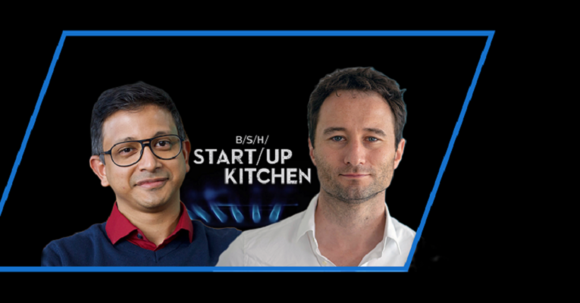Kanban, product owner and design thinking – these are all terms commonly used to date in IT to describe an agile method of software development (Scrum methodology). But in the meantime this method is now also making inroads at BSH. And the reason is that consumer needs are becoming increasingly personalized. Product development also has to respond to this and offer solutions that are specifically tailored to consumers. Scrum is a methodology that allows the demand for more individuality to be met successfully and significantly faster. The Bretten plant in Baden-Württemberg provides a good example of just how this works in practice. Project manager Tarak Turki’s team is successfully developing new generations of extractor hoods at the plant. And thanks to agile work methods, the process is now a whole lot faster and more coordinated than was previously the case.
From theoretical planning …
The employees in Bretten used to develop their extractor hoods on the basis of linear workflows: At the start, the product or requirement specification was painstakingly prepared, outlining the requirements for the future product and explaining how these would be implemented technically. It’s no wonder then that it can take up to two years with this kind of extensive elaboration before the first prototypes are manufactured and assessed. Only then, however, does is usually become clear whether all the ideas were effectively implemented – and whether they meet the current technical standards and consumer expectations. For a long time, there was little room to flexibly adapt development of hoods.
... to dynamic development
Yet flexibility is vastly important when developing extractor hoods. After all, the hood is a consumer product that should look good and function. It has to suit the taste of consumers and meet their needs. Development work must therefore adapt to the dynamic nature of the market with its ever changing consumer demands.
The plant in Bretten shows how the new requirements are changing everyday work at BSH. The current prototype of an extractor hood is the center of attention in Tarak Turki’s project room. A small workbench offers the opportunity to make changes to the prototype at any time. The developers can thus assess directly whether a new idea also has innovation potential.
“When we’re tinkering together on a hood and discussing it, we’re far more creative than if we work in isolation in front of the computer,” explains Tarak Turki.
But tinkering together isn’t the only reason for the team members to meet in the project room. They also discuss progress and tasks there and share out the latter between them. Large white Kanban boards hang on the walls, showing the current work steps with red, yellow and green flash cards. That way, everyone can see which phase the project is currently in, which steps are up next and who is responsible for them. The tasks are updated every two to three weeks and agreed with all the employees involved.
“Ultimately, we want to create a product that’s aligned to consumers’ needs. New, agile methods also help us achieve this goal,” says Tarak Turki.
The project manager has the role of product owner within the development team. He decides on the implementation time, functionality and costs. He also defines the product features to be developed.
And if no progress is being made at one of the meetings, the development team can use poker cards: As is customary when working with Scrum, the team uses “Planning Poker” as a playful way of advancing the process, with each team member assessing the current tasks. Questions are then asked such as: “How high are the requirements?” or “What’s the time commitment?” This helps the group reach a consensus faster.
Creativity, fun and openness
Agile methods ensure greater openness in the team. The atmosphere of the modern project room supports creative sharing. And, of course, input from consumers isn’t neglected either. The keyword is design thinking – an approach for linking innovative solutions with positive experiences for consumers. After all, the end consumer needs to be included more than ever today directly in development, because a product that fails to meet consumer needs is ultimately superfluous.
Firmly anchored in everyday life
In the meantime, the agile approach to developing hoods has become indispensable in Bretten – even if not all employees are yet familiar with it. “Some know agile concepts from their studies and are open to the concept, while for others the topic is completely new,” says Tarak Turki. We need to convince them that agile methods offer practical advantages: faster successes in the team and better solutions are developed for BSH consumers. But best of all, the new methods are also fun because they offer employees more freedom and creativity.
Tarak Turki is pleased: “Those colleagues who have already tried out the agile approach find it exciting and are motivated to continue. Agile – suddenly it feels really good.”




